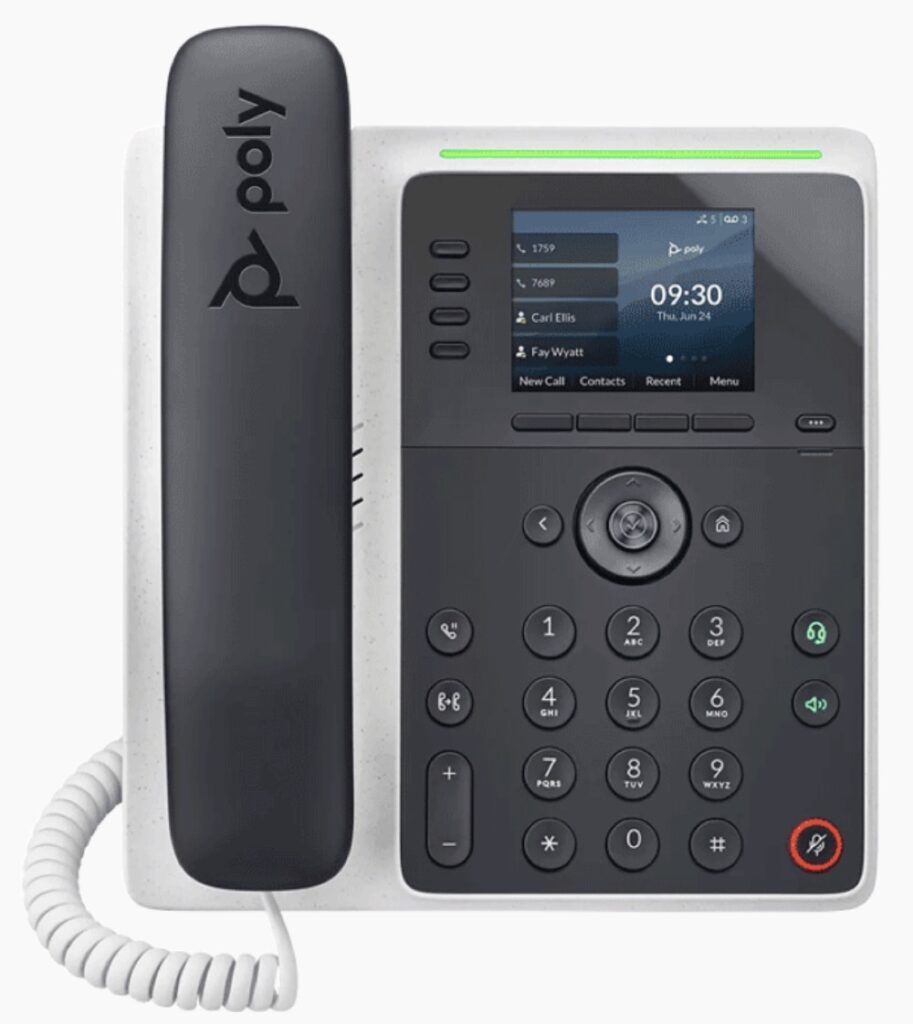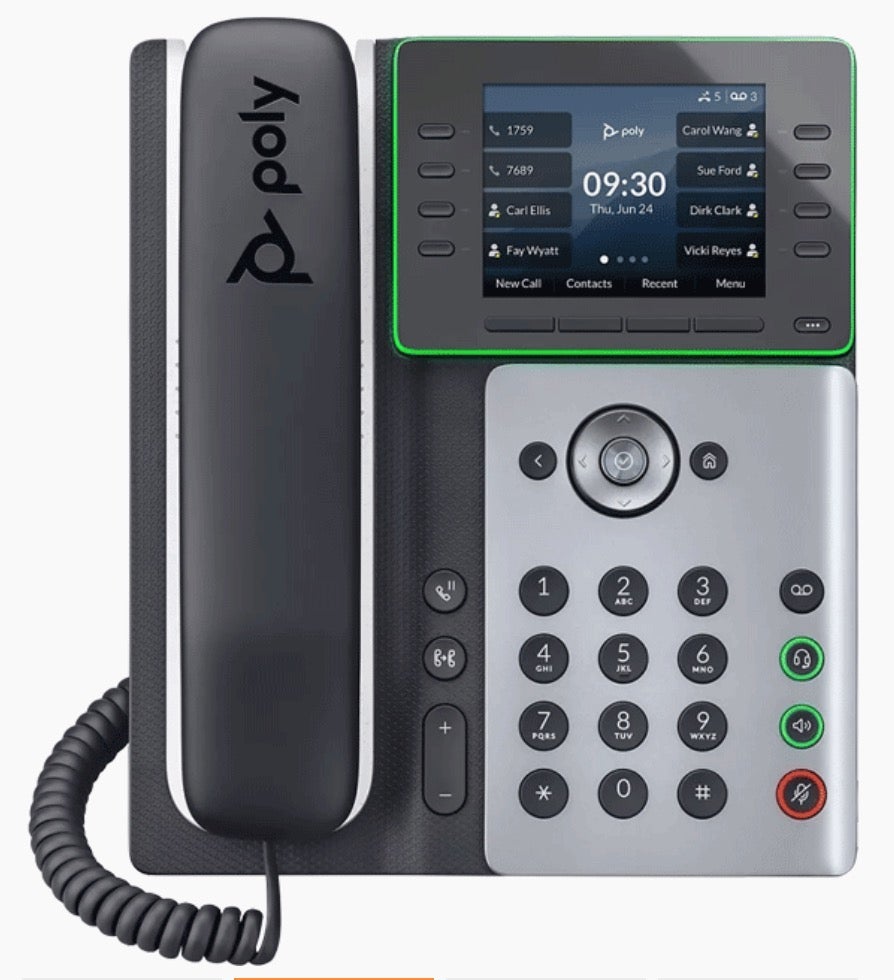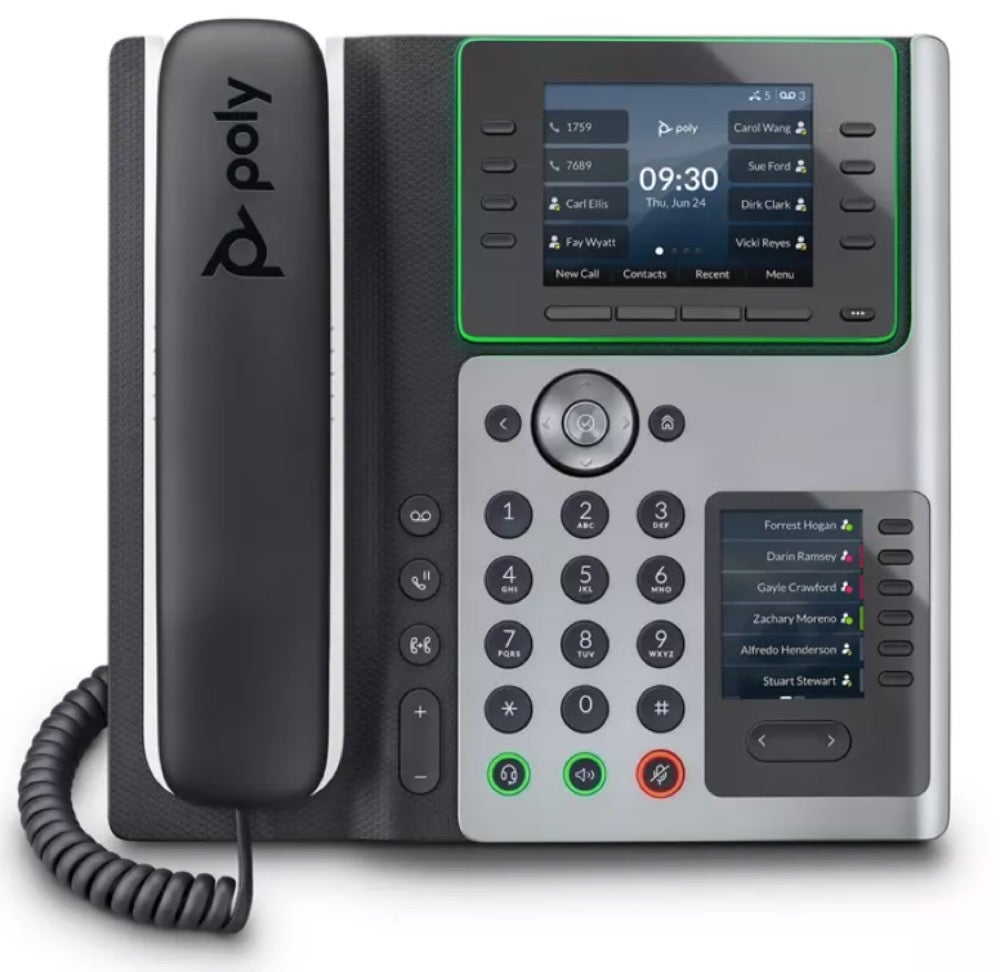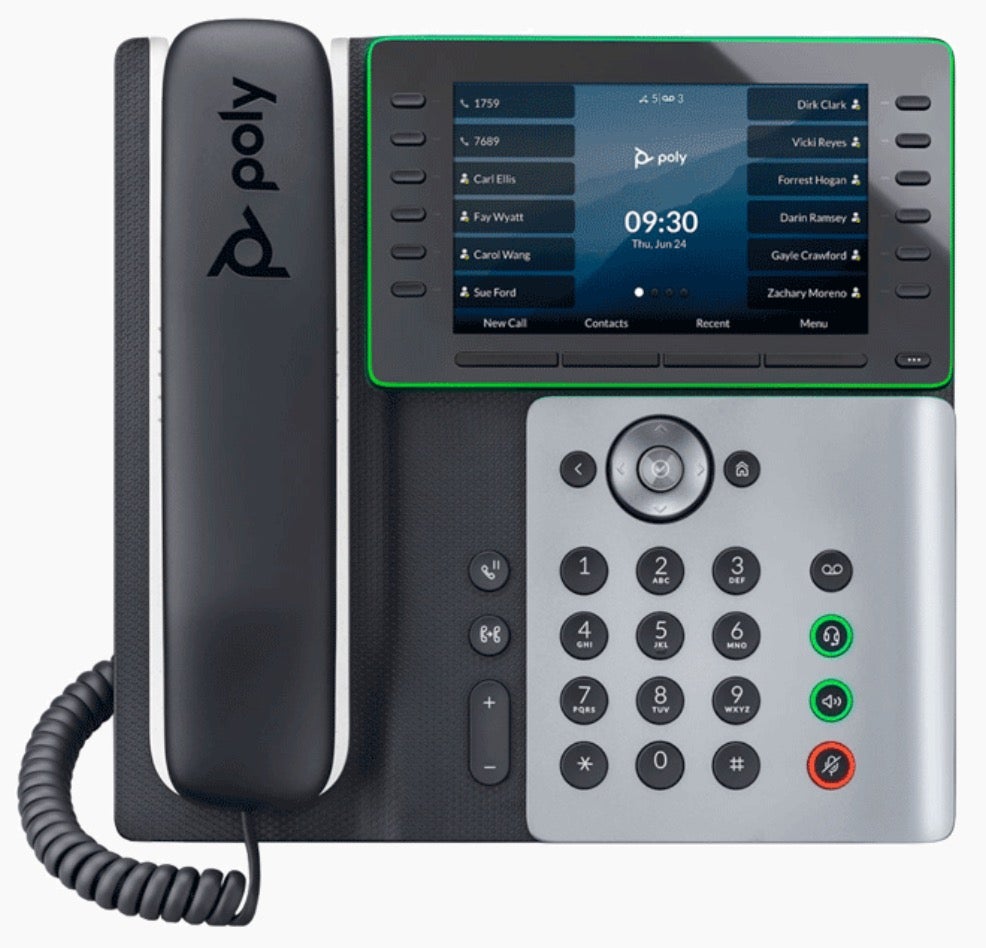Physical Phones for Zoom Phone
For individual use, we strongly recommend using Zoom Phone from the Zoom app.
- Situations Requiring a Physical Phone
- Before You Can Get a Physical Phone
- Requesting a Physical Phone
- Available Phone Models
- Questions?
Situations Requiring a Physical Phone
A physical Zoom phone is required in the following situations:
- Common (or “position”) area that needs a physical phone line, such as at a front desk or reception area. (Note: To request a physical phone for a conference room, please email UIS at help@georgetown.edu.)
- If your department has a physical phone that is used by student employees, volunteers, or other part-time employees.
Before You Can Get a Physical Phone
Before you can be approved for a physical phone, please be aware that:
- You must have an Ethernet (computer) connection to plug in the phone. (If you have an existing connection, that connection can be shared between your computer and the phone.)
- The requesting department/program will need to incur any costs associated with getting a physical phone. These costs can include (but might not be limited to):
- Purchasing the phone set. (IMPORTANT: Please wait until you speak with UIS before you purchase a phone.)
- Incurring associated additional costs. (e.g., installation costs; if you don’t currently have an Ethernet connection for the phone, UIS will need to install a new Ethernet connection.)
Requesting a Physical Phone
Please email help@georgetown.edu to request a confirmation call from UIS before you order a phone. (You don’t need to email us if you already indicated that you need a physical phone.)
In the confirmation call, we will discuss your needs with you, help determine where you want to set up the phone, and help you determine whether your location has a working Ethernet connection. (Note: If you don’t currently have an Ethernet wired connection, there will be costs associated with installing a new connection.)
Available Phone Models
The following physical phone models have been approved for use with Zoom Phone at Georgetown:
The models come with the same functionality as the old Cisco/Avaya desk phones. They also include such features/functions as Bluetooth integration (e.g., to pair with a Bluetooth headset), USB ports, ability to share a network connection, enhanced built-in security, and accessibility features such as text-to-speech.
The table below lists each phone model, and includes an at-a-glance rundown of features/functions for each one.
Poly E220

- 4-line, entry-level IP desk phone
- Up to 16 lines
- 2.8” Color IPS LCD display (320×240 pixels)
- Bluetooth integration
- (1) USB-C port (can be used for a wired headset)
Click here for more information about the Poly E220.
Poly E350

- 8-line, mid-range IP desk phone
- 3.5” Color IPS LCD display (320×240 pixels)
- Up to 32 lines
- Bluetooth integration
- (1) USB-C port (can be used for a wired headset)
Click here for more information about the Poly E350.
Poly E450

- 8-line, performance IP desk phone with a second 6-line contacts display
- Main display, up to 32 lines; 2nd display, up to 12 lines
- Main display: 3.5” Color IPS LCD display (320×240 pixels) 2nd display: 2.5” Color IPS LCD (240×320 pixels)
- Bluetooth integration
- (1) USB-C port (can be used for a wired headset)
- Supports expansion module for additional buttons
Click here for more information about the Poly E450.
Poly E550

- 12-line, performance IP desk phone
- Up to 48 lines
- 5” Color IPS LCD display (800×400 pixels)
- Bluetooth integration
- (2) USB-C ports (can be used for a wired headset)
- Supports expansion module for additional buttons
Click here for more information about the Poly E550.
Questions?
If you have any questions or need assistance, please contact UIS by emailing help@georgetown.edu.
